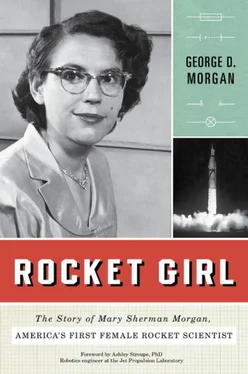Thus began a series of e-mails and phone calls as Shirley and I discussed what would be required to mount the play’s world premiere. Astonishingly, she never once asked me to rewrite or edit any part of the play—almost unheard-of in the world of new play production. This concerned me, since all experienced writers know that rewriting is a healthy and necessary part of the process. I let it get to me, of course, allowing my ego to expand like an inflated zeppelin ( The play must be perfect, blah, blah ). Shirley set a date five months away for opening night, and I could not have been happier.
Then reality set in.
A few weeks passed, then Shirley began calling me, groaning about “scheduling problems.” Caltech had three venues suitable for staging a play, and apparently the school’s faculty had all three of them booked well in advance for lectures, seminars, symposiums, and so on.
“We’ll have to reschedule the production.”
The play was pushed back a few months—several times. When the year 2007 came to a close, and we still did not have a firmed-up opening date, I began to worry. Shirley kept reassuring me, but as the sun rose on January 1, it began to look like the odds were against achieving my “golden anniversary” idea. Still, I received frequent e-mails from Shirley with enthusiastic progress reports. January 31—the actual launch anniversary—came and went. February, March, April, and the communications from Shirley became fewer, then stopped all together.
Toward the end of May, Shirley wrote to tell me she had decided to retire from her job. Immediately. Health problems had taken their toll, and she just could not handle her directing responsibilities any longer.
“As of tomorrow,” she said, “Caltech will no longer have a theatre director.”
Shirley said she would recommend to her successor, who had yet to be chosen, that Rocket Girl be produced at the school “eventually,” but that she could not give me any guarantees, which I completely understood. Whenever there is a regime change in the world of performing arts, the new powers-that-be bring with them their own vision of which plays/films/art/etcetera should be promoted. The odds were extremely remote that two theatre directors in a row would be passionate about risking their reputations on a new play.
Rocket Girl , I realized, was almost certainly dead. While I waited for news from TACIT, I busied myself with other writing projects. There were dozens of them, which, like a panting Labrador, waited patiently each day for their master’s attention. One morning, as I was working on a musical play composition, it dawned on me that I had never heard back from MIT.
When I wasn’t writing, I would do more research, continuing to delve into the mystery of my mother’s life. I use the word mystery because that is what it is.
Was Mary Sherman a secret agent? Perhaps she was an operative with the OSS. Or the CIA. I begin to wonder because the more I look into her life, the more evidence I find that seems to point to some sort of premeditated, intentional erasure of the historical record. It’s as if Mary, or someone, has methodically and carefully expunged every record of her existence prior to her marriage to my father, G. Richard Morgan. I start asking myself, whom did my father really marry on July 29, 1951?
It gets more Hitchcockian by the day.
One day, I pick up the phone and call the records department at Minot State University (formerly Minot State College) in North Dakota. A year prior, I had had a phone conversation with the same department that said they did indeed have a record of my mother going to school at Minot in the early 40s. I decide it would be prudent, from a research standpoint, to have some sort of written documentation of her attendance, so I call and request a copy of her transcript. After running a records search they claim to have found nothing. They promise to keep searching and get back to me.
Two days later, they call back: no transcript and no records of a Mary Sherman attending Minot State College. Ever.
What happened between last year and this year?
I could have gotten transcripts from the second college she attended, DeSales College in Toledo, Ohio. Except they closed down more than half a century ago, and no one knows where the archived records are. No one knows if such records even exist.
Truth be told, many of these problems are of my own making. From childhood into adulthood I have consistently failed to understand the historical significance of certain records or events until it is too late. Photographs are a prime example. Until I began this writing project, my understanding of the importance of family photographs was meager. The house is burning—what do you grab first? Most people say, “The family photographs.” Me, I just say, “Get the hell out of the house!” But telling my mother’s story has changed all that. Now I kick myself for missing opportunities to preserve a handful of written and photographic records. A few years ago, my father showed me a photograph of my mother’s Ray High School graduation class. It was a black-and-white 8 × 10, and it was in surprisingly good condition. As the class valedictorian, Mary was seated in a place of honor, front and center in the midst of the class. That group consisted of about sixty smiling students. Where is that photograph today? No one knows. I did nothing to preserve it, and now it’s probably gone forever. At the time my father showed it to me I failed to understand its significance or historical importance. I said something like, “Oh, that’s nice,” then moved on to some other responsibility hounding me for attention.
There is one important score: going through boxes of old records, my father finds an 8 × 10 high-school graduation portrait photo of his future wife. Somehow, in the course of all my many writing projects, I ended up with it. It’s the only known photograph of Mary prior to her wedding day in July 29, 1951. The quality is decent, but it just makes me wish somewhere along the line the Shermans and Morgans had been more diligent in taking, storing, and preserving early family photos. The urgency seems so obvious now; what was I thinking? Taking no chances, my daughter Carley and I begin a project to accumulate and digitally store all family photographs.
The house is on fire? Don’t worry: everything’s in the iCloud.
My family’s failures to keep and maintain a proper photo collection over the past eighty years certainly explains part of the reason there is a dearth of early photographs of Mary Sherman. But eventually I become convinced that something else is at work. My mind begins to wander and I start to consider more sinister possibilities. Only one surviving photo for the first twenty-six years of a person’s life? The whole thing has a mysterious secret-identity, person-without-a-name, Jason Bourne quality to it. Given that she worked in a US government top secret weapons plant during World War II, it’s not so far-fetched. What kind of family, after all, keeps no photos of babies, children, and young adults? There is the high-school graduation photo, but no one avoids that portraiture duty anyway. No photographs prior to high-school graduation, two photographs at graduation, then no photos of Mary Sherman for the next eleven years—until her wedding day.
I send an e-mail to my sisters, Karen and Monica, complaining about the lack of photographic records from the Shermans. Independent of each other, they both e-mail me back and relate a story. Both versions of the story are very similar, so I give it a great deal of credence. It is a story they say our mother shared with them (but not me) many years before. We will call it the “Mother Does Not Abide Photography” story.
The sun—a dependable traveler on a lonely billion-year journey—had been down for three hours. From one horizon to the other, the evening fireworks show was in full bloom. Mary lay on her back staring at it. Like oxygen slamming into the intake of a jet engine, the nippy night air flowed cold into her nostrils, warmed as it traveled down her throat, then expanded like a bellows once it reached her lungs.
Читать дальше













